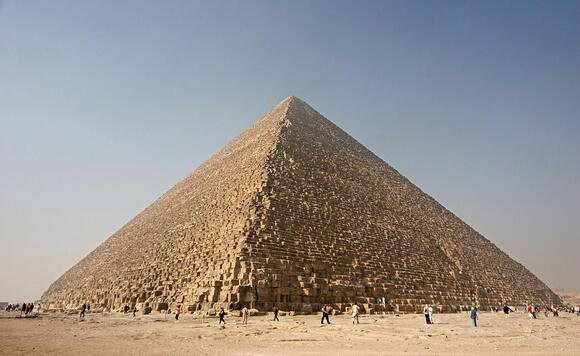We tend to think of modern marvels like the Empire State Building or the Panama Canal when we think about architectural feats. All of these structures, however, are part of a lengthy history of architectural achievement that draws on principles learnt thousands of years ago. This is why many architects draw inspiration from historical structures.
Take a peek at these architectural marvels from back then and see what makes them so special.
The Red City of Petra

Petra, which had been lost to modern civilisation for hundreds of years, was rediscovered in the early 1800s by an adventurous European explorer. Built by the Nabateans, a technologically advanced civilisation that ruled over a broad swath of land stretching from Israel and Jordan to the Arabian Peninsula's northern reaches. Between 400 BC and AD106, when they were conquered by the Romans, Petra was their capital city.
The fact that each of the city's gigantic monuments was hewn directly from the surrounding cliffs is what makes it truly impressive. The buildings have red, white, pink, and grey rock veins running through them, and you can observe a combination of Nabatean and Greco-Roman architectural motifs on them, demonstrating the diaspora's influence.
Machu Picchu, Peru

Machu Picchu, located on the eastern slopes of the Andes, was built by the Incas in the fifteenth century and represents the pinnacle of Incan civilization and architectural skill. The site is 32,000 hectares in size and has major civil, agricultural, water management, and religious structures.
The city's architecture is purposefully meant to blend in with the surrounding natural scenery. There are well-defined zones for various functions within the city, suggesting a high level of centralised social, governmental, religious, and agricultural control. The high stone walls are made up of exactly cut stones that are so closely fitted that not a hair can be seen between them, and the high stone walls are made up of precisely cut stones that are so closely fitted that not a hair can be
The Great Pyramids of Giza

These three pyramids, maybe the most recognizable ancient architectural feat of all time, dominate the Giza plateau's landscape. The tombs were stolen in antiquity (after all, a pyramid is like having a giant, blinking billboard in the desert proclaiming "I'm full with riches.") and were built as the eternal burial places of three Egyptian pharaohs between 2649 and 2150 B.C. There are three chambers inside each tomb, one of which (the King's chamber) has air shafts with astrologically significant alignments.
The Great Pyramid, the tallest of the pyramids, stands over 145 meters tall. Its base is level to within an inch, yet it took over 20 years for teams of employees to cut, transport, and install the approximation.
Banaue Rice Terraces, Philippines

Many ancient wonders are incredible technical accomplishments designed to supply food or safety for humans, rather than enormous colossal constructions. These 2000-year-old rice terraces are positioned 1500 feet above sea level. The terraces, which cover 10,360 square kilometers and were created by hand with little machinery on the border of a mountain range, cover a total area of 10,360 square kilometers.
The terraces provided a large stretch of ground for food production, and the ancient people of the area devised a complicated irrigation system to keep the fields productive. Many of the rice fields are still in use by local people today.
Stonehenge, Avebury, Silbury Hill, and associated monuments, England

Stonehenge is unique in of itself: the megalithic stones were quarried hundreds of miles away in Wiltshire and Pembroke, transported to the site, aligned with numerous astronomical events, and built by a prehistoric civilization with limited tools. It is positively mind-boggling when coupled with other massive structures on the same area.
For example, it is currently impossible to explain why an ancient tribe would wish to build a 39.5-meter-high man-made hill at Silbury out of half a million tons of chalk. One thing is certain: the area's monumental design and interconnection of sites suggest the presence of a wealthy, or at least well-to-do, community.
There are thousands of outstanding historic sites around the world, and each one may teach us something about architecture's evolution, how humans interact with constructed and natural settings, and the function of architecture in meeting society's changing nature and requirements.
What historical sites have you seen? Which of these have had a significant impact on your work?